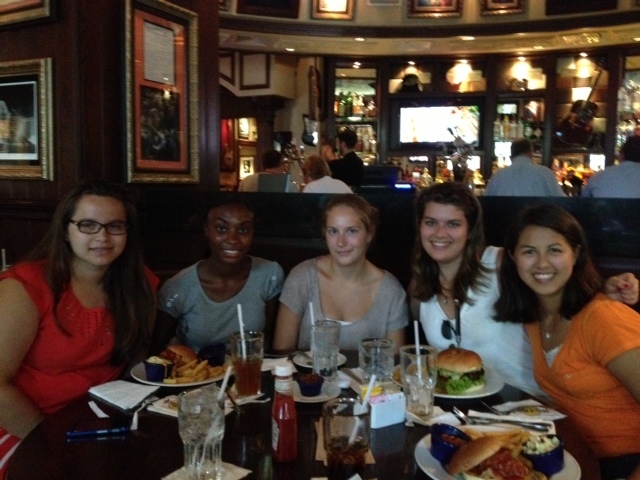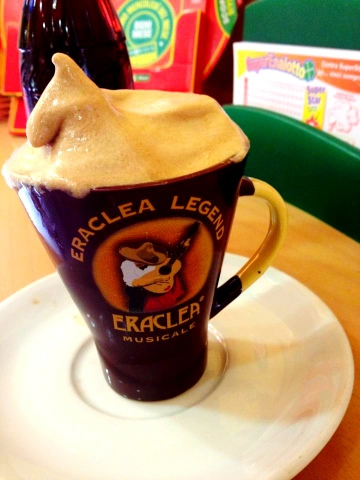In the morning, we went to Santa Fe. This island is home to a unique species of land iguanas (some of which are up to five feet long). This species is endemic to Santa Fe and is more yellow in color with a more pronounced row of spines on its back. Here, the iguana eats the flowers from prickly pear cactus. That being said, it is interesting to note that this species of cactus is specifically adapted to a larger size as a form of protection from these land iguanas.
 |
When we landed at the beach, we saw two baby sea lions playing.
|
|
 |
Tall cactus trees on the island.
|
|
The Santa Fe island iguana is an interesting species. Males can take up to 12 years to reach sexual maturity. They are extremely territorial, often found away from the shoreline. To defend their territories, males engage in head-butting battles. The female tends to be smaller than the male with shorter spines. Mating typically occurs from February to March.
 |
Land iguana by the path.
|
 |
Close up of a land iguana.
|
|
Near the beach, we saw a Galapagos hawk. The one we saw was a juvenile, identifiable by its paler head and neck with yellowish-brown underparts. While the hawk is found in the highlands and lowlands, nesting occurs only in the lowlands. I wonder why that is? I'd assume they'd be better protected in the highlands. The Galapagos hawk has a unique mating system called cooperative polyandry. Four males will gather around one female (paired with her for breeding), helping to protect that one territory. In turn, this increases the chances of breeding success as the males also help to feed the young.
 |
Galapagos hawk on some tree branches.
|
|
Even though the skies were overcast, the second part of the hike was extremely difficult (and even more so when you're still groggy from sea sick pills). We climbed about 320 feet of straight, vertical trails, a hike that our naturalist says he does only every year or two (and only one time per season). The loose gravel made balance almost impossible while drowsy, but somehow I made it to the top. I felt so sick and I felt so bad that Dr. Keller carried my bag up and down the hike! The view was worth it and even though I didn't take any photographs up top, I think I'll remember that hike for awhile.
 |
This is where the zodiacs dropped us off for this hike.
|
|
While I don't go snorkeling due to too many bad experiences with the ocean, today's quiet time (when the snorkelers were out) was exciting. As I was sitting in the lounge writing this journal entry, one of the crew members, Enrique, came up to me excitedly. He told me that he had seen two orcas near a boat. We waited for a minute and sure enough, the orcas surfaced again! Orcas, also known as killer whales, are the largest members of the dolphin family. Its markings are jet black, white and grey. Perhaps the most identifiable feature is its elliptical white patch behind each eye. The orca is one of the most wide-ranging mammals, often found in colder waters.
In the afternoon, we had a dry landing at South Plaza. The island has red mats of sesuvium and prickly pear cactus, both of which serve as food for the land iguanas. We walked along the sea cliff observing a variety of birds including the swallow-tailed gulls, shearwaters and red billed tropic birds. This island is also home to "retired" male sea lions which form bachelor colonies. Having been chased out of harems by other males, these losers (as Martin calls them) will often die alone since they don't go to eat. As we made our way back to the boat, it started to rain. The cool raindrops felt fantastic in the humid, hot weather.
That's all for now... Stay tuned for more Galapagos adventures. Also, be sure to hit the subscribe button to be notified of new posts, as there is sometimes unreliable internet! Follow my instagram @elissatitle for more photography posts.
















Comments
Post a Comment